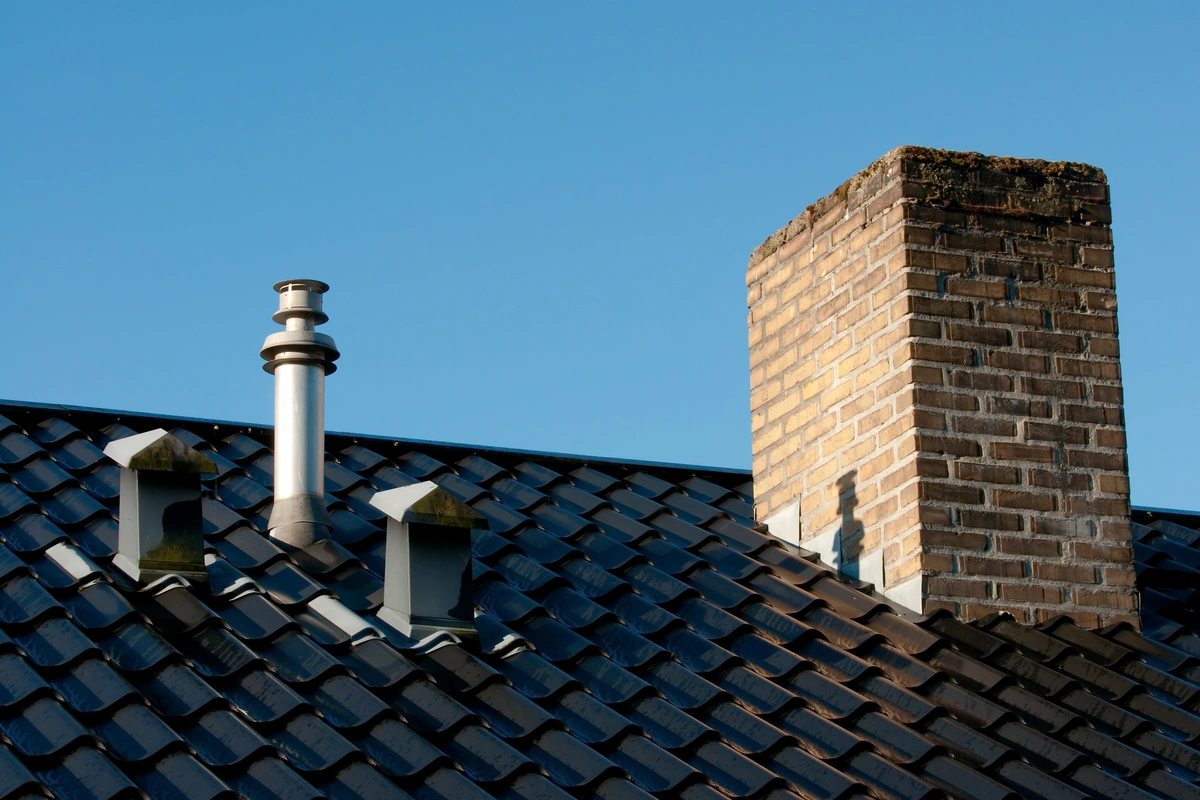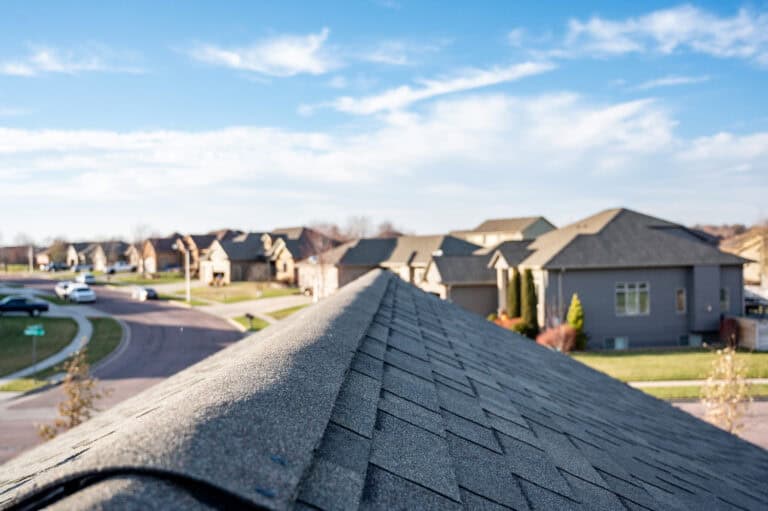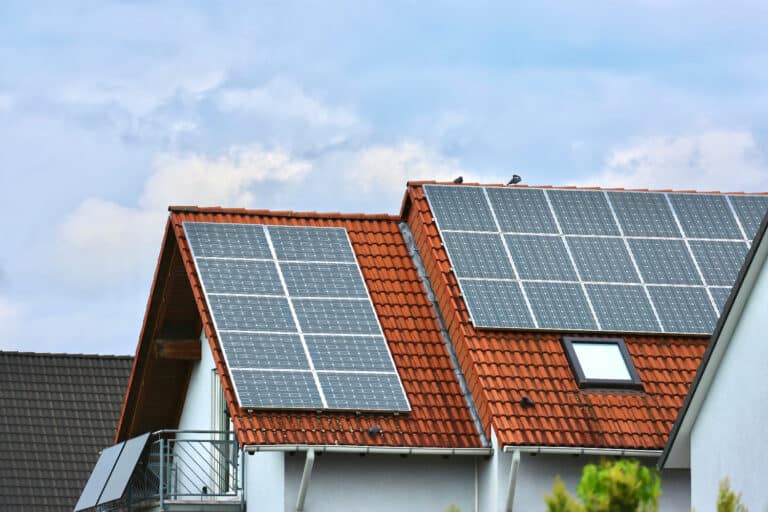Alright, so you’ve heard about this thing called “roof flashing,” and you’re wondering what the buzz is all about, right? Well, you’re in for a treat because we’re about to tell you all about what roof flashing is and why your roof benefits from it (including how it can save your home from some serious water trouble!).
Need roof repair? Or getting informed before you install a new roof?
Here’s what you’ll learn from this blog:
- The benefits of roof flashing for your home
- 5 key types of roof flashing
- Common mistakes for homeowners to avoid when it comes to roof flashing installation
Ready to learn everything you need to know about roof flashing and its benefits? Start scrollin’!
So, What is Roof Flashing?

Let’s start with the basics. Roof flashing isn’t some flashy superhero cape for your roof, but it’s just as essential. Essentially, it’s a weather-resistant material, often made of metal, that’s strategically placed in vulnerable areas of your roof to prevent water from sneaking into places it shouldn’t be.
Why Your Roof Needs Roof Flashing 🌧️
Now, let’s get into the nitty-gritty of why your roof needs flashing to help protect your home from the elements.
- Waterproofing: Roof flashing acts as a waterproof barrier, keeping water out of areas where it could cause damage. It’s like an umbrella for your home, ensuring that pesky rain doesn’t find its way inside.
- Preventing Leaks: Without flashing, your roof’s vulnerable spots, like intersections, valleys, and around chimneys or vents, become prime targets for leaks. Flashing reinforces these areas, making sure leaks are a no-go.
- Extending Lifespan: By safeguarding your roof’s vulnerable points, flashing helps extend the lifespan of your roof. Without it, water infiltration can lead to premature deterioration and costly repairs.
- Protection from Mold + Rot: Moisture sneaking into your home can lead to mold growth and wood rot, which are not only unsightly but also unhealthy and expensive to fix.
- Aesthetic Appeal: Flashing can also enhance the overall look of your roof by creating clean lines and a polished finish.
5 Types of Roof Flashing 🏗️
Alright, now that you know why roof flashing is crucial, let’s talk about the various types:
1. Step Flashing
These L-shaped pieces of metal are used in roof valleys and on sloped surfaces. They’re layered, so they create a protective barrier that diverts water away from seams and intersections.
2. Chimney Flashing
As the name suggests, this one’s all about chimneys. It wraps around the base of your chimney and extends up the sides to create a watertight seal.
3. Vent Pipe Flashing
These are designed to fit snugly around vent pipes protruding from your roof. They ensure a waterproof connection where these pipes meet the roof.
4. Valley Flashing
This type is used in the valleys of your roof, where two slopes meet. It helps channel water down the roof and away from vulnerable areas.
5. Drip Edge Flashing
This goes along the edge of your roof, over the eaves, and it helps direct water away from the fascia and into the gutters.
The Importance of Proper Installation 🛠️
Protecting your home isn’t just about having roof flashing; it’s about knowing how to install roof flashing correctly. Improper installation can lead to just as many problems as having no flashing at all. So, when it comes to your flashing, don’t cut corners.
Here are some crucial installation tips:
- Seal the Joints: Flashing pieces should overlap and be sealed with roofing cement or a suitable sealant. This prevents water from finding its way underneath.
- Nail It Down: Flashing should be securely fastened to your roof. Loose or flapping flashing is as good as no flashing.
- Inspect Regularly: Over time, flashing can deteriorate or become damaged. Regular inspections can help you catch and fix issues before they turn into costly problems, like a roof flashing leak.
- Work with Pros: If you’re not confident in your roofing skills, it’s best to leave the flashing installation to the pros. Getting it done right the first time will save you headaches down the road.
Common Flashing Mistakes to Avoid 🙅♂️

Now, let’s dive into some common goof-ups that folks tend to make when it comes to roof flashing – consider this your cheat sheet to steer clear of these blunders. First off, it’s all about picking the right roof flashing materials. Not all flashing materials are cut from the same cloth, and choosing the wrong type can fast-track you to a world of trouble, complete with premature wear and tear and nasty leaks.
Next, let’s talk about inspections; don’t shrug ’em off! Flashing may hide out of sight, but that doesn’t mean it should be out of mind. Regular check-ups can spot issues early, saving you from shelling out big bucks for repairs down the road. Speaking of saving, don’t even think about skipping the sealing step. Properly sealed flashing is your fortress against water infiltration and the accompanying damage. Then there’s the matter of overlaps – flashing pieces should cozy up just right, no awkward gaps allowed. If they don’t, you’re basically rolling out the red carpet for water to trickle in where it shouldn’t.
Lastly, location matters; flashing should be in all the right places to be your roof’s loyal guardian. Put it in the wrong spots, and your roof might just throw its hands up in surrender to the elements. The most important thing to remember is that you should always leave it to the roofing professionals if you have any doubts about installing roof flashing properly.
The Cost of Not Having Flashing 💸
Let’s go over what happens when you neglect roof flashing. It’s not a pretty picture:
- Water Damage: Without flashing, your roof becomes a sponge for water, leading to leaks, water damage, and mold growth.
- Structural Damage: Over time, water infiltration can weaken your roof’s structure, leading to costly repairs or even a roof collapse.
- Health Hazards: Mold and mildew resulting from water damage can pose health risks to you and your family.
- Decreased Property Value: A damaged roof due to missing or improperly installed flashing can significantly decrease the value of your home.
Protect Your Home Like a Pro With Roof Flashing
While roof flashing may not be the flashiest topic, it’s undoubtedly one of the most critical aspects of your roof’s health. There’s no question about its amazing ability to protect your home from water damage, leaks, and costly repairs. So, don’t underestimate the power of proper roof flashing, and make sure your home is equipped to weather any storm.
Click here to get in touch with our pro roofers to ask any questions about roof flashing. Plus, we’ll give you a quick and free estimate for your next roofing project!




